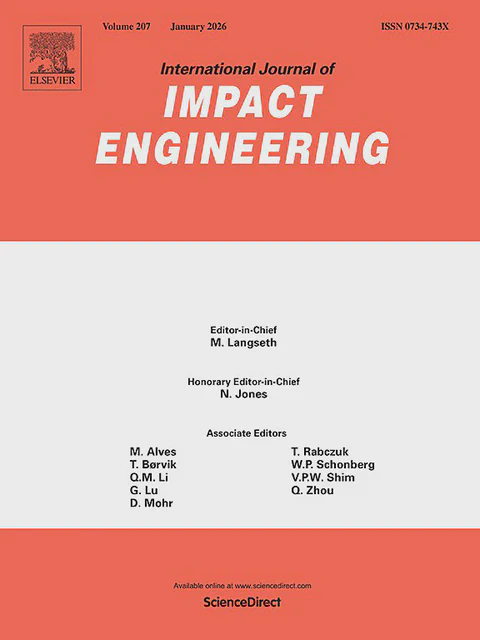Dynamic direct tensile behaviour of high-strength strain-hardening fibre-reinforced cementitious composites: Rate dependence, inertial effect, and ductile-brittle transition
8月 1, 2025·
 ,,·
0 分钟阅读时长
,,·
0 分钟阅读时长
Yanxin Hao
Equal contribution
Xing Yin
Equal contribution
,Qinghua Li*
Guan Quan
Shilang Xu

摘要
High-strength ultra-high toughness cementitious composites (HS-UHTCC), with compressive strength of 167 MPa and tensile strain capacity of 4.6 %, shows significant promise in resisting dynamic loading. This study conducted direct tensile tests across eight strain rates (ranging from 0.00004 /s to 58 /s) for HS-UHTCC, comprehensively covering quasi-static, seismic, and impact loadings. This study provides a detailed analysis of stress equilibrium, inertial effects and machine ringing, which are often overlooked in dynamic studies. Numerical analysis was employed to isolate the pure strain rate effect of the tensile strength. Additionally, scanning electron microscopy (SEM) analysis was used to analyse the transitions in fibre failure modes. The results demonstrate that the mechanical properties of HS-UHTCC exhibit a strong strain rate dependence. Both the initial cracking strength and ultimate tensile strength increase with strain rate, whereas the tensile strain capacity decreases. However, even at a high strain rate of 40 /s, the material retains a tensile strain capacity of 1 %, and its strain energy density remains unaffected by strain rate. The presence of inertia effects significantly influences the apparent tensile strength, and a generalized tensile constitutive relation is proposed for strain capacity prediction at various strain rates. Fibre failure modes change with varying strain rates, marking one of the sources of the material’s strain rate dependence. This study is expected to advance the application of HS-UHTCC in seismic and protective engineering.
类型
出版物
International Journal of Impact Engineering, 202, 105309